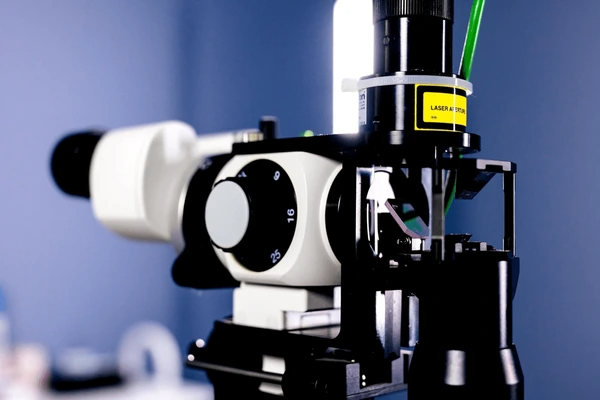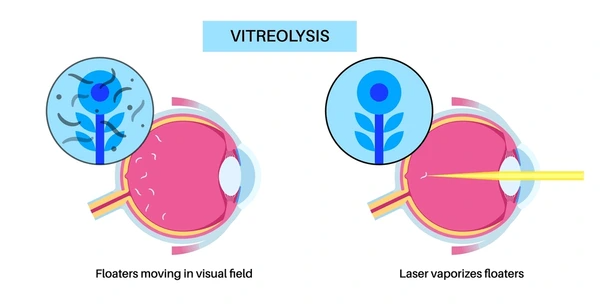
A YAG laser is a powerful solid-state laser that uses yttrium aluminum garnet (YAG) as its gain medium. Widely recognized for its precision, reliability, and versatility, the YAG laser has become a staple in multiple sectors, from medical surgery and dermatology to industrial cutting and beauty treatments. Its ability to deliver energy in a focused, high-intensity beam makes it ideal for procedures that demand accuracy and minimal collateral damage.
What is a YAG laser? Eureka Technical Q&A explains that a YAG (Yttrium Aluminum Garnet) laser is a solid-state laser widely used in medicine, industry, and cosmetics for its precision and versatility—ideal for procedures like eye surgery, laser cutting, and skin rejuvenation.
This article explores what a YAG laser is, how it works, and its applications in healthcare, manufacturing, and cosmetic technology.
What Is a YAG Laser?
A YAG laser refers to a laser system that uses yttrium aluminum garnet (Y₃Al₅O₁₂) as the host crystal. This crystal is doped with rare-earth ions — usually neodymium (Nd) or erbium (Er) — to create two main types of lasers:
- Nd:YAG (Neodymium-doped YAG) – 1064 nm (infrared)
- Er:YAG (Erbium-doped YAG) – 2940 nm (mid-infrared)

Key Characteristics:
- Solid-state laser
- High output power
- Excellent beam quality
- Can be operated in continuous-wave or pulsed modes
How Does a YAG Laser Work?
- Pumping: Light from a flashlamp or diode laser excites the dopant ions (Nd³⁺ or Er³⁺) in the YAG crystal.
- Excitation: Electrons jump to higher energy states.
- Stimulated Emission: When electrons return to lower states, they emit photons of a specific wavelength.
- Amplification: These photons are amplified through an optical cavity to produce a focused laser beam.
Nd:YAG lasers emit light at 1064 nm, while Er:YAG lasers emit at 2940 nm, making each suitable for different tissue or material interactions.

Nd:YAG vs. Er:YAG Lasers
- Nd:YAG Laser: Advantages include deep penetration and effectiveness in treating vascular conditions. Limitations include potential for significant thermal damage and longer healing times.
- Er:YAG Laser: Advantages include minimal thermal damage and precision in targeting water-rich tissues. Limitations include limited penetration depth, which may restrict its use in deeper tissue applications.
| Feature | Nd:YAG (1064 nm) | Er:YAG (2940 nm) |
|---|---|---|
| Penetration Depth | Deep (up to 5–7 mm) | Superficial (0.1–1 mm) |
| Absorption Target | Hemoglobin, Melanin | Water (highly absorbed) |
| Best For | Veins, hair, tattoos | Skin resurfacing, ablation |
| Mode Options | Q-switched, long-pulse | Pulsed (high precision) |
YAG Laser Applications in Medicine

1. Ophthalmology
- Posterior capsulotomy: Clears cloudy capsule after cataract surgery.
- Peripheral iridotomy: Treats narrow-angle glaucoma by creating a small hole in the iris.
2. Dermatology
- Nd:YAG: Used for laser hair removal, vascular lesions (spider veins), and pigmented lesion treatment.
- Er:YAG: Used in skin resurfacing, wrinkle reduction, and acne scar treatments.
3. Tattoo Removal
- Q-switched Nd:YAG lasers emit ultra-short pulses to break down tattoo ink particles.
- Effective on darker ink colors (black, blue, green).
4. Dentistry
- Er:YAG lasers can cut enamel, dentin, and bone with minimal heat.
- Used in cavity preparation, gum contouring, and periodontal therapy.
5. Surgical Applications
- Nd:YAG lasers are used in endoscopic surgery, bleeding control, and tumor ablation in gastrointestinal or urological procedures.
Industrial Uses of YAG Lasers
Material Processing
Industries use YAG lasers for precision tasks like cutting, welding, and marking. These lasers deliver high beam quality, reliability, and energy efficiency. Manufacturers rely on them for micromachining and detailed engraving.
Medical Applications
Surgeons use holmium:YAG lasers for procedures like tissue ablation and kidney stone removal. These lasers precisely target tissues, reducing damage to surrounding areas. They are common in urology, dermatology, and ophthalmology.
Laser Amplifiers
Engineers often choose YAG as a solid-state laser host due to its strong thermal and optical properties. Doping it with elements like neodymium or ytterbium enables laser generation at specific wavelengths.
Optoelectronics
YAG transparent ceramics support white light systems and LED phosphors. Compared to glass and single crystals, they offer superior optical clarity and durability in high-performance optoelectronic devices.
Radiation Detection
YAG works well in scintillation detectors. It converts ionizing radiation into visible light, which aids in medical imaging, security scanners, and nuclear monitoring systems.
High-Power Laser Systems
YAG-based systems handle industrial machining tasks requiring high pulse energy and low repetition rates. They perform well in cutting hard metals and precision welding.
Optical Fiber Lasers
Manufacturers draw YAG into single crystalline fibers to build high-power fiber lasers. These lasers support excellent mode quality and power scalability for industrial and scientific use.
Aesthetic Dermatology
Doctors use erbium:YAG lasers to treat acne scars. These lasers vaporize water in the skin with minimal thermal damage, providing effective skin resurfacing with faster healing.
Application Cases
| Product/Project | Technical Outcomes | Application Scenarios |
|---|---|---|
| Brightness Converter TRUMPF Laser UK Ltd. | Enhances beam quality and power in high-power lasers, addressing thermal lensing and brightness issues. | High-power laser systems requiring improved beam quality and efficiency. |
| Polycrystalline YAG Fibers Air Force Research Laboratory | Developed processing methods for <30 μm diameter fibers suitable for single-mode laser operation. | High-power lasers and high-temperature structural materials. |
| Ceramic YAG Raytheon Integrated Defense Systems, Inc. | Improved optical quality, scale-up, and demonstration of laser quality Yb, Nd, and Er doped ceramic YAG materials. | High power solid state lasers and IR transparent missile domes. |
| YAG Powder Synthesis Materion Corp. | Achieves high-purity, high-sinterability YAG powders at lower temperatures, improving yield and cost-effectiveness. | Production of high-quality YAG materials for optical and laser applications. |
| Nd:YAG Single Crystal Fibers Nippon Telegraph & Telephone Corp. | Maximizes Nd concentration at the central axis of fibers, enhancing laser oscillation and optical amplification efficiency. | High-efficiency laser and optical amplification systems. |
Cosmetic and Beauty Applications of YAG Lasers
YAG lasers have revolutionized non-invasive aesthetic treatments by offering effective, low-downtime solutions.
1. Hair Removal
- Long-pulsed Nd:YAG lasers target melanin in hair follicles.
- Particularly effective for darker skin types (Fitzpatrick IV–VI).
2. Skin Tightening and Rejuvenation
- 1064 nm lasers stimulate collagen production through thermal effects.
- Er:YAG lasers provide fractional or ablative resurfacing for smoother skin.
3. Vein Treatment
- Treats spider veins, varicose veins, and vascular malformations by heating and collapsing blood vessels.
4. Hyperpigmentation
- Targets melanin clusters, improving melasma, sunspots, and freckles with minimal damage to surrounding skin.
Advantages of YAG Lasers
- Precision: Can selectively target specific tissues or materials.
- Versatility: Suitable for soft and hard tissue, metals, plastics, and more.
- Minimal Downtime: Especially with Er:YAG lasers in cosmetic applications.
- Non-contact: Reduces contamination in surgical and industrial uses.
- Portable Options: Many medical YAG systems are compact and mobile.
Limitations and Considerations
- Cost: Equipment can be expensive, especially for high-powered models.
- Safety: Requires trained operators and protective eyewear due to potential eye and skin hazards.
- Tissue Selectivity: Must choose between Nd:YAG or Er:YAG depending on target chromophore.
- Cooling Systems: Thermal buildup needs effective cooling, especially in dermatology.
Conclusion
YAG lasers have become indispensable tools across a broad range of disciplines, thanks to their precise energy delivery, deep tissue penetration (Nd:YAG), and surface-level accuracy (Er:YAG). Whether you’re performing delicate eye surgery, engraving microcircuits, or offering advanced skin treatments, YAG laser technology delivers unmatched versatility and precision.
As solid-state laser design advances and becomes more cost-effective, the role of YAG lasers in minimally invasive medicine, high-speed manufacturing, and cosmetic innovation will continue to grow.
FAQs
YAG stands for Yttrium Aluminum Garnet, a synthetic crystal used as the base material in these lasers.
Nd:YAG (1064 nm) penetrates deeper and targets pigment and blood vessels. Er:YAG (2940 nm) is absorbed more by water, making it ideal for skin resurfacing and ablation.
Yes, when performed by trained professionals using appropriate safety protocols. Protective eyewear is essential.
Nd:YAG lasers are especially effective and safe for darker skin tones, which are more sensitive to other laser types.
Medical and cosmetic procedures may have effects that last months to years, depending on the application and number of sessions.
To get detailed scientific explanations of YAG Laser, try Patsnap Eureka.


